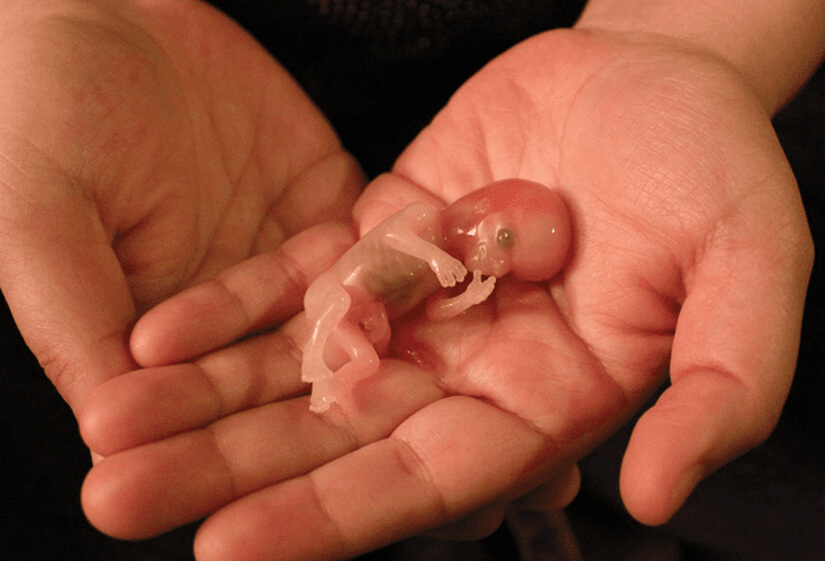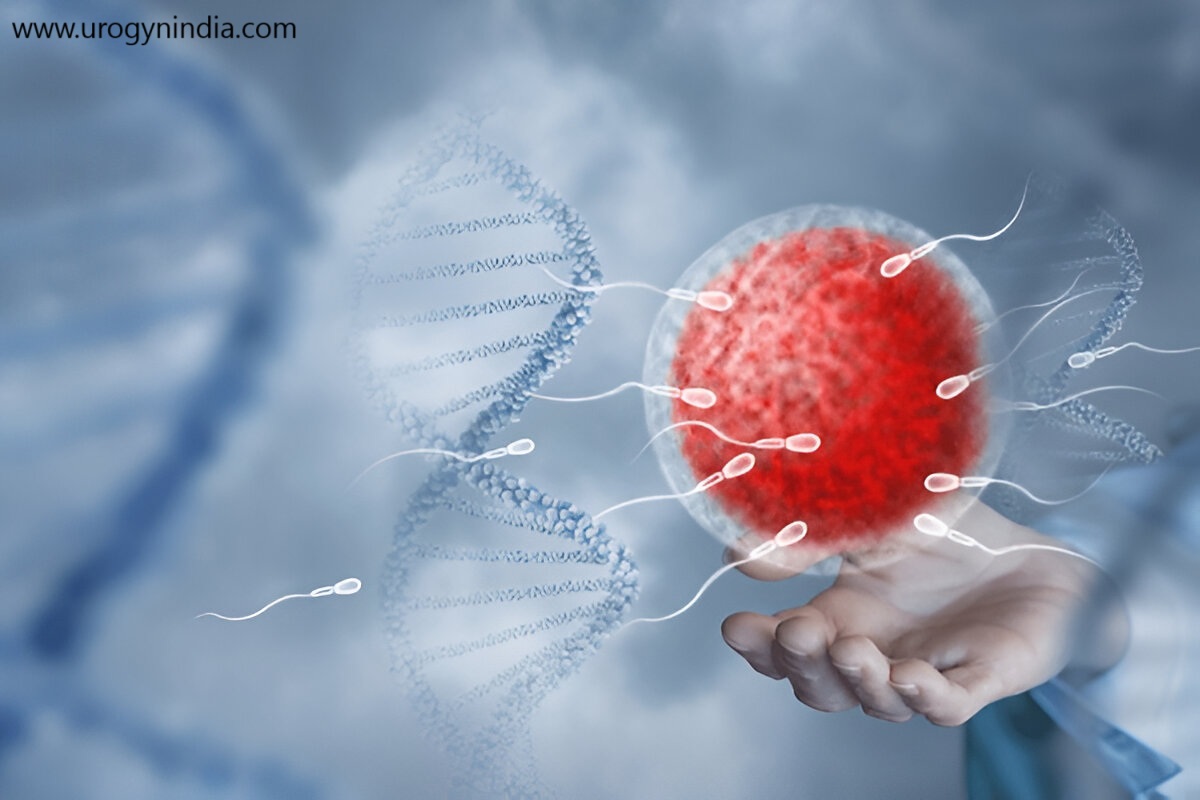Debunking Myths About Pregnancy: Separating Fact from Fiction Debunking Myths About Pregnancy: Separating Fact from Fiction Pregnancy is a life-changing journey filled with joy, anticipation, and sometimes, confusion. With such a significant event, it’s no surprise that myths and misconceptions abound. Unfortunately, these myths can spread misinformation and cause unnecessary anxiety for expectant parents. As a trusted gynecologist, it’s crucial to address these myths and provide accurate information to ensure a healthy and informed pregnancy. In this blog post, we will debunk some common myths about pregnancy, separating fact from fiction. Myth 1: You’re eating for two. Fact: While it’s true that nutrition is vital during pregnancy, it doesn’t mean you should double your calorie intake. Pregnant women require around 300-500 additional calories per day, depending on their pre-pregnancy weight and activity level. Focus on a balanced diet rich in fruits, vegetables, lean proteins, whole grains, and dairy products to meet your nutritional needs. Myth 2: Pregnant women should avoid exercise. Fact: Exercise during pregnancy is not only safe but also beneficial for both the mother and the baby. Unless advised otherwise by your healthcare provider, most women can continue their regular exercise routines or engage in low-impact activities like walking, swimming, or prenatal yoga. Exercise can improve mood, boost energy levels, and help prepare your body for labor. Myth 3: You can’t dye your hair during pregnancy. Fact: While it’s essential to be cautious during pregnancy, there is no concrete evidence linking hair dye to harm in unborn babies. Most hair dyes contain minimal amounts of chemicals that are unlikely to be absorbed into the bloodstream. However, it’s recommended to limit exposure by avoiding hair treatments during the first trimester when the baby’s organs are developing. Myth 4: Heartburn during pregnancy means your baby will have a lot of hair. Fact: This myth has been around for generations, but there is no scientific evidence to support the claim. Heartburn is a common pregnancy symptom caused by hormonal changes and pressure on the stomach. The amount of hair on a baby’s head is determined by genetics, not maternal heartburn. Myth 5: Sleeping on your back can harm the baby. Fact: While it’s generally recommended to sleep on your side during pregnancy, particularly the left side, there is no evidence to suggest that sleeping on your back directly harms the baby. However, lying on your back for an extended period can cause dizziness, breathing difficulties, and low blood pressure. If you’re uncomfortable or experiencing any of these symptoms, it’s best to switch to a side-lying position. Conclusion Pregnancy is a time when accurate information is crucial for the well-being of both the mother and the baby. By debunking common myths about pregnancy, we can empower expectant parents with the right knowledge. Remember to consult your healthcare provider for personalized advice and guidance throughout your pregnancy. With accurate information, you can make informed decisions and embrace this beautiful journey with confidence and peace of mind.
Understand Why Miscarriages Happen
Understand Why Miscarriages Happen Understand Why Miscarriages Happen: Expert Insight by a Top Gynecologist in Ludhiana Miscarriage is maybe the most hurting and emotional experience that a woman has to suffer. As experienced gynecologist in Ludhiana, I realize the moment of not just medical treatment but also the emotional support for women and families going through this tough moment. In this article, I will be presenting valuable information regarding miscarriages—their causes, symptoms, emotional impact, and care options. What Is a Miscarriage? Miscarriage deal with the normal loss of pregnancy prior to 20 weeks. In the majority of case, it happen in the first three months. The most frequent reason is a fetal genetic abnormality, but other causes like hormonal imbalance, chronic diseases, uterine abnormalities, infections, and lifestyle like cigarette smoking or chronic alcohol consumption become reason of miscarriages. At our hospital in Ludhiana, we provide best pregnancy care so both mother and baby are well cared for, right from the beginning. Signs and Symptoms to Watch For Early signs of miscarriage should be identified to enable timely attention. The most frequent symptoms are: Vaginal bleeding or spotting Abdominal pain or cramping in the lower abdomen Passage of fluid or tissue from the vagina It is important to note that pregnancy bleeding doesn’t always indicate a miscarriage. In case you are feeling any abnormal symptoms, please visit your lady doctor in Ludhiana right away for an faithful diagnosis and treatment. Emotional Support and HealingMiscarriage is more than a physical loss—it impacts emotional well-being deeply. Most women experience grief, guilt, anger, or confusion. We feel that emotional wellness is as vital as recovery. Through counseling, support groups, or individual sessions, we provide empathetic care to assist women in restoring and healing in a safe, respectful atmosphere. If you are seeking high-risk pregnancy solutions in Punjab, emotional and mental counseling is always included in our counselling to care. What to Do After a MiscarriageIf there has been a miscarriage, you should be medically rated to check for any complications and plan for future health. In some cases, there might be a need for medical or surgical intervention to safely finish the process. At our clinic in Ludhiana, we guide women in recovering with dignity and care, solving all ladies’ issues with individual attention and medical care. Planning a Healthy Future PregnancyA single miscarriage doesn’t indicate that future pregnancies are unsafe. The majority of women do continue to have healthy babies later. We always, however, recommend follow-up and appropriate planning. What we are provide.. Preconception counseling Genetic testing (if indicated) Nutritional and lifestyle advice Hormonal balance assistance Complete newborn care after birth If you have had a miscarriage or have concerns about pregnancy care, we are here for you each step of the way with safe, respectful, and experienced care.
Understanding Cosmetic Gyneacology : Enhancing Confidence and Empowering Women
Understanding Cosmetic Gyneacology Cosmetic Gynaecology: Building Confidence and Intimacy in Women Cosmetic gynaecology is a new and developing field of women’s health that deals with the look and the function of the female genital area. This is gaining popularity among women who desire to be more confident and at ease with their bodies. No matter what it is due to – childbirth, aging, or choice – cosmetic gynaecology has solutions that can really help. If you are looking for the best gynaecologist in Punjab or a top lady doctor in Ludhiana who offers cosmetic treatments, you should know what these procedures entail and how they can help you. What is Cosmetic Gynaecology? Cosmetic gynaecology encompasses a range of treatments aimed at both physical and functional issues. They commonly involve: Labiaplasty – redesigning the inner or outer labia for improved comfort and appearance Vaginoplasty – tightening the vaginal muscles, usually following childbirth Hymenoplasty – surgery to restore the hymen Clitoral hood reduction and monsplasty – to enhance comfort and visual appeal These procedures are designed to improve a woman’s self-esteem, comfort, and intimate health. Aesthetic and Emotional Concerns Numerous women are self-conscious about how their intimate area appears, particularly after giving birth or with age. Conditions such as enlarged or asymmetrical labia, loose skin, or tissue tone changes can erode confidence and even relationships. Cosmetic gynaecology ensures these issues are resolved, restoring a woman’s body confidence. If you’re in Punjab and looking for an experienced and understanding specialist, choosing the best cosmetic gynaecologist in Ludhiana ensures both your emotional and physical concerns are addressed with care. Functional Benefits Beyond Appearance These procedures aren’t merely cosmetic-they can bring genuine functional enhancements. Vaginoplasty, for instance, can enhance muscle tone and increase sexual pleasure. Hymenoplasty, while an individual choice, is culturally or emotionally significant to some women. The ultimate aim is to enable women to feel more attuned to their bodies. Personalized Care and Safety First Each woman is unique, and so are the reasons why she would choose cosmetic gynaecology. A trained and experienced gynaecologist will listen to your objectives and suggest what works best for you. Trusted clinics in Punjab and Ludhiana prioritize patient safety and hygiene. Procedures are done under strict medical supervision with full privacy and empathy. Emotional Well-being and Empowerment Most women who experience cosmetic gynaecology feel more empowered, confident, and satisfied—not only physically but emotionally as well. They experience improvements that result in a healthier quality of life, better relationships, and greater connection to their femininity. Final Thoughts Before you think about any cosmetic treatment, it’s crucial to meet with a certified and skilled gynaecologist. The top gynaecologists in Ludhiana and Punjab will walk you through each step, assisting you in making educated decisions that fit your needs and lifestyle. Cosmetic gynaecology is more than physical appearance—it’s a matter of self-love, confidence, and an act of taking control of your health. Contact Now
Understanding Infertility: Causes, Diagnosis and Treatment Options
Understanding Infertility: Causes, Diagnosis and Treatment Options Infertility is a complex medical condition that affects millions of couples worldwide. It is defined as the inability to conceive after one year of unprotected intercourse. While infertility can be a challenging and emotional journey for those experiencing it, advancements in medical science have provided a range of diagnostic tools and treatment options. In this blog, we will explore the causes of infertility, methods of diagnosis, and available treatment options for couples seeking to start a family. Causes of Infertility: Ovulation Disorders: Irregular or absent ovulation is a common cause of female infertility. Hormonal imbalances, polycystic ovary syndrome (PCOS), and premature ovarian failure can all disrupt the ovulation process. Tubal Factors: Blockages or damage to the fallopian tubes can prevent the fertilization of the egg by the sperm. Common causes include pelvic inflammatory disease, endometriosis, or previous surgeries. Uterine Factors: Structural abnormalities within the uterus, such as fibroids, polyps, or adhesions, can hinder implantation and pregnancy. Male Factors: Infertility can also be attributed to male factors, including low sperm count, poor sperm motility, or abnormal sperm morphology. Age-related Factors: As women age, the quantity and quality of their eggs decrease, making it more difficult to conceive. Advanced maternal age can also increase the risk of miscarriage and certain genetic conditions. Diagnosis of Infertility To identify the underlying causes of infertility, various diagnostic tests may be conducted. These may include: Medical History and Physical Examination: A detailed assessment of both partners’ medical history and reproductive health can provide valuable insights. Ovulation Tracking: Monitoring basal body temperature, hormone levels, and ultrasound scans to track ovulation patterns. Semen Analysis: Evaluating the quality, quantity, and motility of sperm to assess male fertility. Hysterosalpingography (HSG):X-ray imaging to examine the uterine cavity and fallopian tubes for any abnormalities or blockages. Laparoscopy: A minimally invasive surgical procedure that allows direct visualization of the reproductive organs to detect any structural abnormalities. Treatment Options: Infertility treatments are tailored to address the specific causes identified during diagnosis. The following are some common treatment options: Medications: Fertility drugs can stimulate ovulation, regulate hormonal imbalances, or improve sperm production. Intrauterine Insemination (IUI):This procedure involves placing washed and concentrated sperm directly into the uterus during the woman’s fertile period to increase the chances of fertilization. In Vitro Fertilization (IVF):IVF involves retrieving eggs from the ovaries, fertilizing them with sperm in a laboratory, and then transferring the resulting embryos into the uterus. Surgical Interventions: Surgical procedures can correct structural abnormalities in the reproductive organs, remove fibroids or polyps, or repair blocked fallopian tubes. Assisted Reproductive Technologies (ART):Techniques such as intracytoplasmic sperm injection (ICSI) or preimplantation genetic testing (PGT) may be utilized to increase the chances of a successful pregnancy. Infertility is a challenging condition that affects many couples, but with the advancements in reproductive medicine, there are various diagnostic and treatment options available. Consulting with a qualified gynecologist or fertility specialist is crucial to understanding the underlying causes of infertility and developing a personalized treatment plan. Remember, infertility is a medical condition, and seeking support from medical professionals can provide the necessary guidance and hope on the journey to parenthood.




